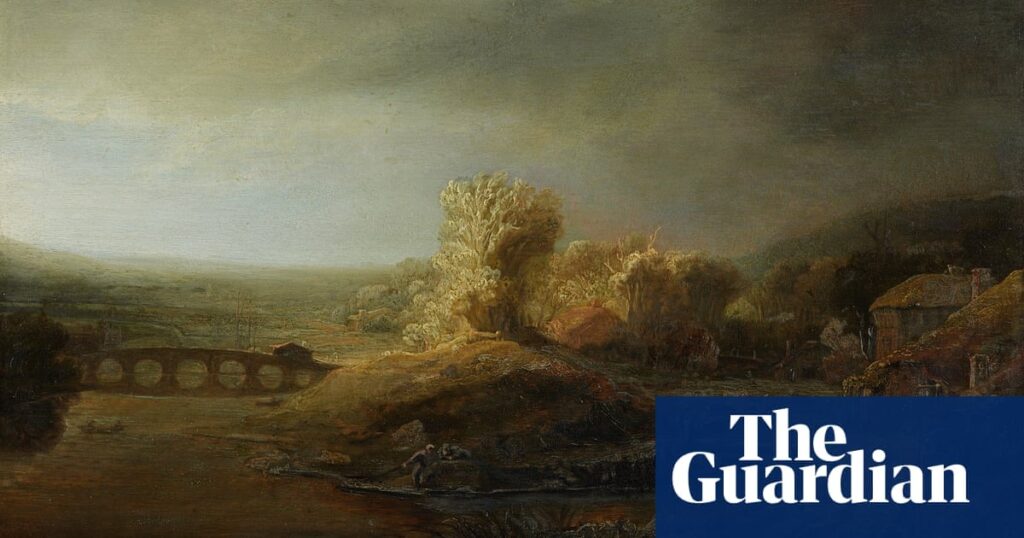A landscape painting considered to have been the work of a Rembrandt pupil has been confirmed as having been executed by the Dutch master himself.
In what has been described as a coup for curators at Berlin’s Gemäldegalerie, which owns the painting, Landscape with Arched Bridge is now considered a direct work of the 17th-century painter, Rembrandt Harmensz. van Rijn. For decades it had been attributed to one of his pupils, Govert Flinck.
Painstaking technical analysis of the small work, dated from 1638, which measures just 28.5cm by 39.5cm, confirmed the longstanding belief of a number of Rembrandt experts who had questioned the work’s demotion in 1989.
Katja Kleinert, the curator for Dutch and Flemish art of the 17th century at the Gemäldegalerie used the occasion of the work’s planned appearance in an exhibition of the British artist David Hockney, which opens on 89 April, as an opportune moment to analyse the picture as part of the Rembrandt Research Project. X-rays showing changes and corrections that had been made to the work helped confirm Rembrandt as its creator. Kleinert said experts were unanimous in their verdict.
Comparisons were made with a very similar composition by Rembrandt, called Landscape with Stone Bridge at the Rijksmuseum in Amsterdam, which the Gemäldegalerie’s director, Dagmar Hirschfeld – herself a Rembrandt expert – said shared hallmarks typical for him.
“You quite often get pairs of paintings, where you have the impression he is trying to do the same again, but in another style of painting or to optimise what he has already achieved,” she said. Analysis of the painting in Berlin, which the gallery acquired in 1924, showed how Rembrandt had made radical changes to the work during its creation, including shifting the position of a storm cloud, reducing the size of a hill and making changes to a group of trees. These processes in turn made the painting more compact and dense.
Specialist examination brought clarity to the way the composition was developed, each change enhancing the masterful Rembrandt style of chiaroscuro – or contrasting light and shadow. The investigation also established that the Berlin work, contrary to previous understanding, was created before and not after the Amsterdam work, which is more exact and translucent.
Experts from the Rembrandt Research Project, set up in 1968 to oversee all research and discoveries about the artist, drew attention to the striking stylistic, technical and thematic similarities between the works, which had previously given art historians reasons to argue the painting was by an extremely capable Rembrandt successor or imitator.
Hirschfeld said the experts’ findings would be documented and published. The promotion of the work from a Flinck to a Rembrandt, means its value will soar to more than €10m (£8.4m). Not that the work is expected to go up for sale. “It is relevant only in the case of the painting being loaned to another exhibition,” according to a spokesperson for the museum.
Landscape with Arched Bridge can be seen as part of the exhibition David Hockney – Landscapes in Dialogue. It includes Hockney’s monumental four-season series, Three Trees near Thixendale from the Würth Collection in Berlin. The works are set against paintings by Rembrandt – of which the gallery owns 20 – and other masters of landscape painting who have inspired Hockney, in what the Gemäldegalerie has described as a “striking conversation”.
Rembrandt painted relatively few landscapes. Until now, only seven were thought to exist.
This content was originally published here.



